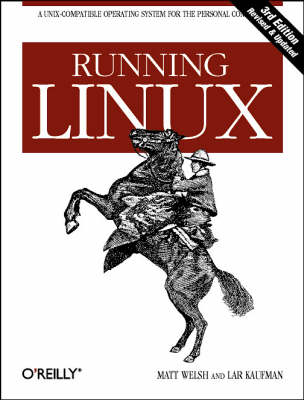Essential Guide to Linux
1 total work
Once a little-known productivity boost for personal computers, Linux is now becoming a central part of computing environments everywhere. This operating system now serves as corporate hubs, Web servers, academic research platforms, and program development systems. All along it's also managed to keep its original role as an enjoyable environment for personal computing, learning system administration and programming skills, and all-around hacking. This book, now in its third edition, has been widely recognized for years in the Linux community as the getting-started book people need. It goes into depth about configuration issues that often trip up users but are glossed over by other books. A complete, UNIX-compatible operating system developed by volunteers on the Internet, Linux is distributed freely in electronic form and at a low cost from many vendors. Developed first on the PC, it has been ported to many other architectures and can now support such heavy-duty features as multiprocessing, RAID, and clustering.
Software packages on Linux include the Samba file server and Apache Web server; the X Window System (X11R6); TCP/IP networking (including PPP, SSH, and NFS support); popular software tools such as Emacs and TeX; a complete software development environment including C, C++, Java, Perl, Tcl/Tk, and Python; libraries, debuggers, multimedia support, scientific and database applications, and much more. Commercial applications that run on Linux range from end-user tools like word processors and spreadsheets to mission-critical software like the Oracle, Sybase, Informix, and IBM DB/2 database management systems. Running Linux explains everything you need to understand, install, and start using the Linux operating system. This includes a comprehensive installation tutorial, complete information on system maintenance, tools for document development and programming, and guidelines for network, file, printer, and Web site administration.
New topics in the third edition include: KDE, a desktop that brings the friendliness and ease-of-use of Windows or the Macintosh to Linux Samba, which turns Linux into an office hub that serves files and printers to Microsoft systems PPP, the most popular software for logging into remote systems over phone lines Revised instructions for installation and configuration, particularly covering the Red Hat, SuSE and Debian distributions
Software packages on Linux include the Samba file server and Apache Web server; the X Window System (X11R6); TCP/IP networking (including PPP, SSH, and NFS support); popular software tools such as Emacs and TeX; a complete software development environment including C, C++, Java, Perl, Tcl/Tk, and Python; libraries, debuggers, multimedia support, scientific and database applications, and much more. Commercial applications that run on Linux range from end-user tools like word processors and spreadsheets to mission-critical software like the Oracle, Sybase, Informix, and IBM DB/2 database management systems. Running Linux explains everything you need to understand, install, and start using the Linux operating system. This includes a comprehensive installation tutorial, complete information on system maintenance, tools for document development and programming, and guidelines for network, file, printer, and Web site administration.
New topics in the third edition include: KDE, a desktop that brings the friendliness and ease-of-use of Windows or the Macintosh to Linux Samba, which turns Linux into an office hub that serves files and printers to Microsoft systems PPP, the most popular software for logging into remote systems over phone lines Revised instructions for installation and configuration, particularly covering the Red Hat, SuSE and Debian distributions
